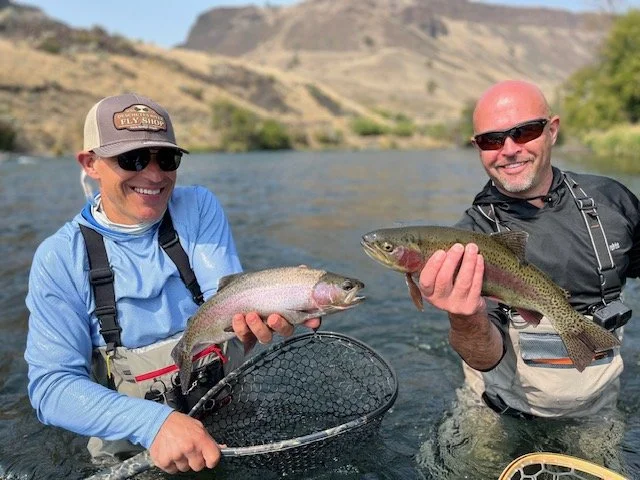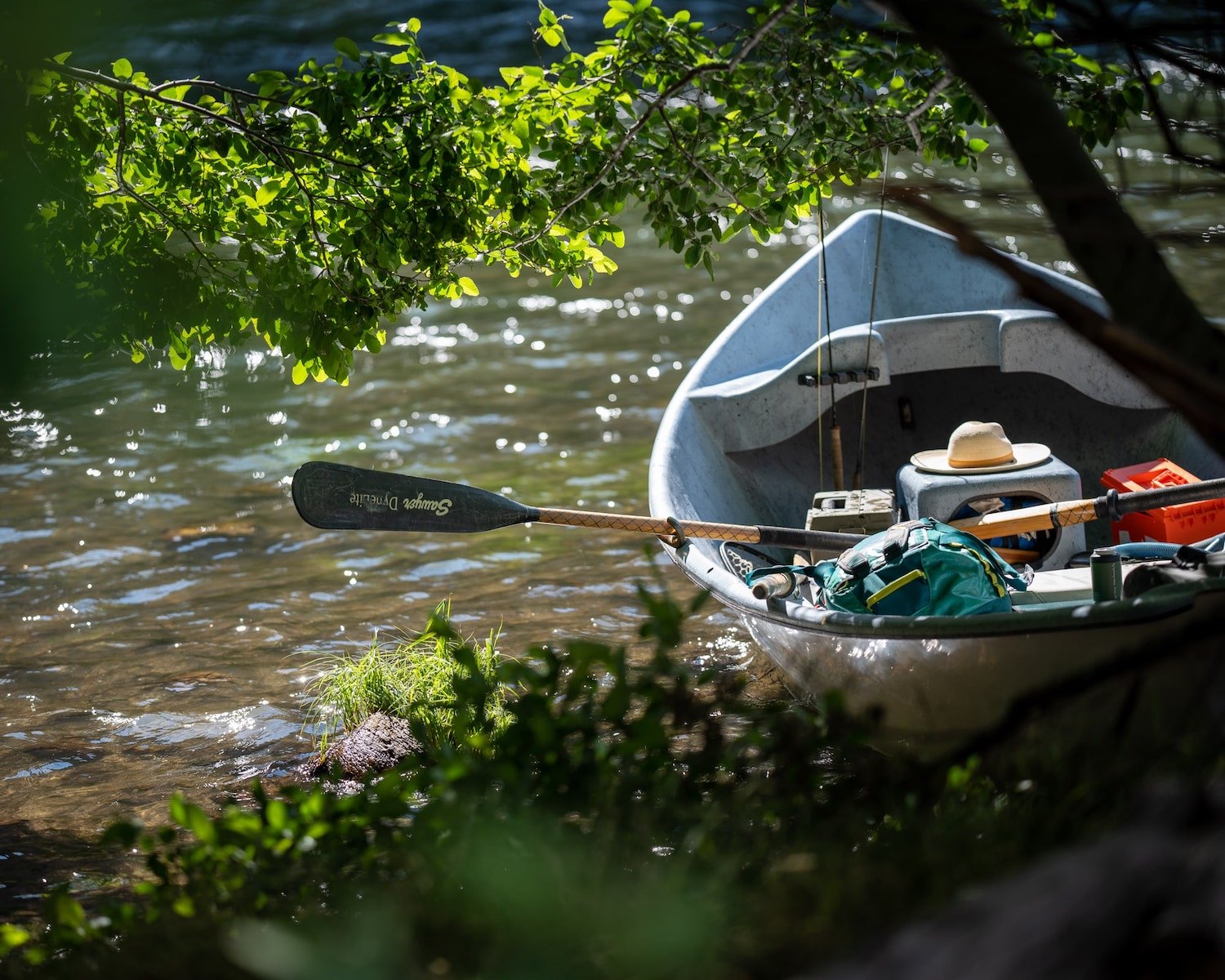Daily Water Quality Violations Plague Lower Deschutes River in 2024
On the lower Deschutes River, it’s too easy being green: in 2024, at the DRA’s water quality monitoring station near Maupin, 225 out of 229 days violated the pH standard, a factor in the proliferation of the kind of snot-on-the-rocks algae growth depicted above. Photo courtesy of USGS.
2024 Water Quality at a Glance
Hannah Camel, DRA staff biologist
Water quality plays a critical role in maintaining healthy aquatic ecosystems, especially in regions like the Deschutes River, where sensitive species rely on stable conditions. Key factors such as dissolved oxygen, pH, and temperature significantly influence the river's overall health. Throughout the 2024 season, 229 days of data were collected for all parameters at both monitoring sites, except for pH at the Warm Springs site, where equipment issues limited data collection to 224 days. This monitoring effort focused on evaluating compliance with Oregon Department of Environmental Quality (DEQ) standards, which aim to protect the river's health and support native fish populations.
Site Insights: Near Warm Springs
This site exhibited significant challenges with pH levels, exceeding the standard of 8.5 on 179 of 224 days (80%). High pH levels can harm aquatic life by disrupting physiological processes and reducing biodiversity. While dissolved oxygen (DO) levels consistently met standards, water temperature violations occurred on 36 of 229 days (16%). These violations are especially concerning, because they coincided with the salmon and steelhead spawning season (October 15 – June 15), a critical time for these cold-water species. Elevated temperatures during this period can increase stress and mortality of eggs developing in the gravel. ( DEQ currently applies the stricter standards for dissolved oxygen and temperature during salmonid spawning periods only until June 15. This fails to protect resident trout spawning that is well-known to continue until August.)
Figure 1. 2024 daily maximum pH (standard units) at River Mile 99.7 with basin upper limit of 8.5 standard units shown with a red line. Note: Due to technical difficulties with the pH sensor, there is a gap in data from 9/19/24 1600 hours to 9/25/24 0900 hours.
Site Insights: Near Maupin
The data from Maupin reveal more widespread pH violations, with 225 of 229 days (98%) exceeding acceptable levels. This persistent issue points to systemic factors influencing water chemistry at this location. Additionally, there were 7 days of DO violations, signaling brief periods of reduced oxygen availability that could stress aquatic organisms. Meanwhile, temperature violations were recorded on 25 of 229 days (11%), with 14 of these occurring during the salmon and steelhead spawning season (October 15 – May 15 in this section of the river).
Figure 2. 2024 daily maximum pH (standard units) at River Mile 50.0 with basin upper limit of 8.5 standard units shown with a red line.
Key Observations
The most pressing issue across both locations was the frequency of pH violations, which indicates potential nutrient enrichment in the watershed. High nutrient loads stimulate excessive algae and aquatic plant growth, driving pH levels above the standard and causing stress to aquatic species. As illustrated in the graph below, the large swings in daily pH are indicative of high algal biomass resulting from this nutrient overload.
Figure 3. 2024 Hourly pH (standard units) at River Mile 99.7 of the lower Deschutes River with basin upper limit of 8.5 standard units shown with a red line.
While the number of temperature violations was lower compared to pH, their persistence—especially during the salmon and steelhead spawning seasons—remains concerning. Elevated temperatures during this critical period can impose thermal stress on cold-water species. Rising air temperatures and surface water withdrawals from Lake Billy Chinook likely exacerbate this issue, especially during summer months. Dissolved oxygen levels, by contrast, were generally favorable, with no violations at Warm Springs and only seven days of violations recorded at Maupin, indicating that oxygen availability is less of an immediate concern.
The Science Must Go On
The routine water quality violations in the 2024 monitoring season underscores the need for continued monitoring and adaptive management to address the interconnected challenges of nutrient enrichment, thermal stress, and ecological health in the Deschutes River.
Stay tuned for further updates as we analyze these findings in more detail and begin work on the 2024 Water Quality Report.
More From The Blog
Subscribe the the DRA Newsletter
The Deschutes River Alliance is your focused voice to protect the lower Deschutes River, its cold water flows and the fish and wildlife that are sustained by them. We send regular emails with important data and news about the lower Deschutes River. We will not sell or loan your contact information to others.
How to Support the DRA
Everyone wants clean, healthy water in the Deschutes River. Oregonians cherish our clean and healthy waterways to provide drinking water, wildlife habitat and recreational activities. The lower Deschutes River is a federally designated Wild & Scenic River, and a national treasure. It must be protected for the environmental and economic health of Central Oregon. We believe by working together we can return the lower Deschutes River to full health.

























